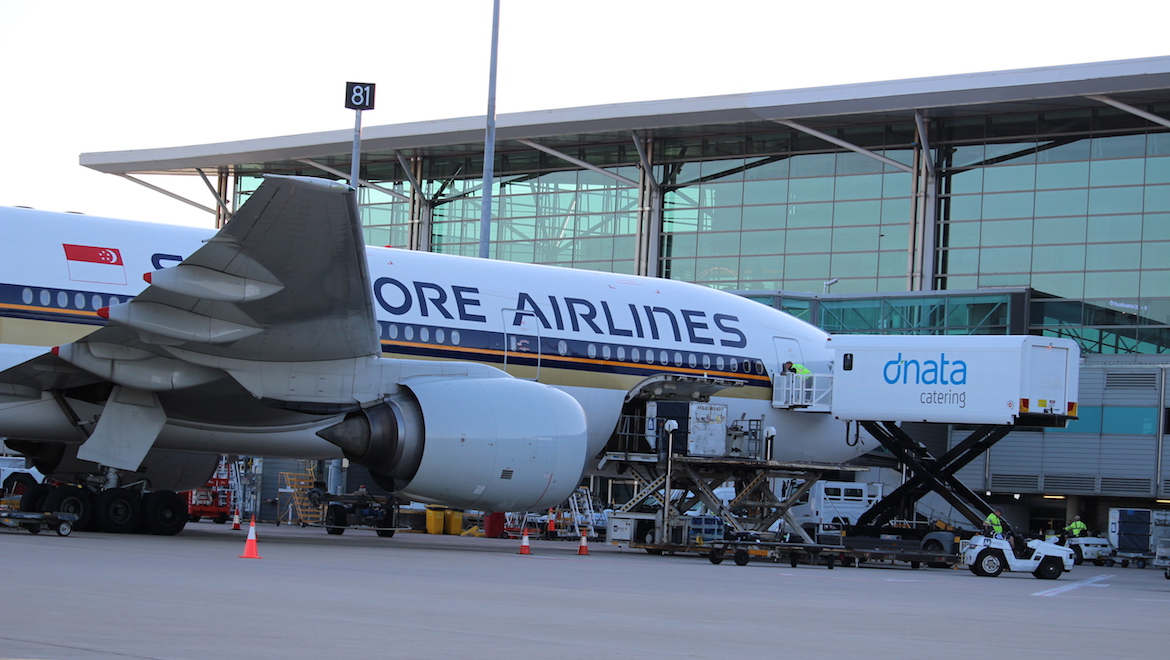This story by John Walton looking at the latest moves from the key players rolling out inflight internet connectivity first appeared in the July 2019 edition of Australian Aviation.
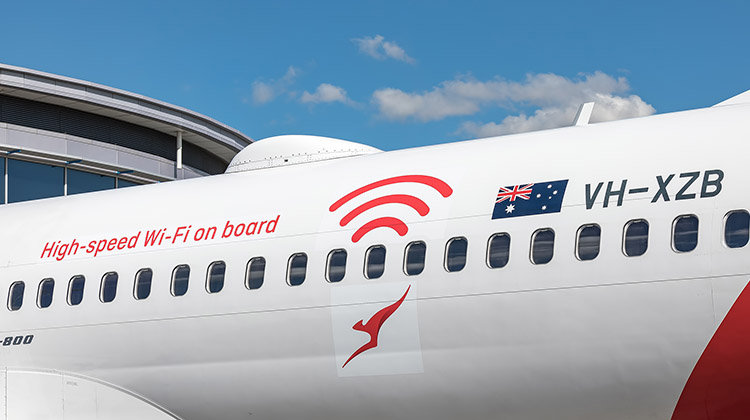
Inflight internet connectivity is big money for the aerospace industry. Just to enter the game, building and lofting a satellite costs a cool half a billion US dollars. Meanwhile, the London School of Economics estimates that annual airline industry efficiency savings from widespread adoption of inflight internet will reach around US$15 billion a year by 2035. Roughly a third of these benefits will come from the flightdeck. Global fuel savings of two to three per cent will also notch up the billions.
In the middle of 2019, inflight internet connectivity is at a major turning point, with the big supplier players coalescing around a single future technology: global high-speed coverage achieved and airlines shifting to the most modern of systems that replicate — and often exceed — the internet experience that Australians see at home.
Flying at over three kilometres per second in geostationary orbits some 36,000 kms above the earth, a modern Ka-band inflight connectivity satellite, says Viasat aviation boss Don Buchman, “is the size of a bus, basically, standing on its end, with all of its electronics folded in. Things that fold out are your solar arrays, which are your electrical power, and your antennas, which will point back to the ground. That’s what communicates between the ground and the satellite.”
Inside the satellite are propulsion systems with their fuel, electronics to control the satellite and what it transmits, and – in many cases – electrical propulsion systems such as ion drives.
But it’s what’s pointing back to the ground that’s crucial. Early connectivity satellites were largely wide beam: the equivalent of a big beam of light from an old-school torch that can’t be focused. Spot beams were later developed to add capacity over particular areas, often airports and key traffic routes in the aviation context. These were first electrically steered, but are now largely aimed electronically without any moving parts.
Both Inmarsat and Viasat’s global Ka-band systems require a base layer of three satellites, positioned over the equator and thus with some coverage gaps at the poles. That’s not really a problem for anyone apart from polar residents, but it’s occasionally an issue for flights that cross the poles — although not enough of an issue to add a further half-billion US dollar satellite at either end of the earth to deal with it.
With aviation crossing the notably lower populated oceans, a global base layer — with satellites over northern south America for the Americas, central Africa for Europe, the Middle East and Africa, and the South-East Asian Archipelago for Asia Pacific — is the first step to global coverage, crucial for most long-haul airlines and particularly for those in our region with long overwater flights.
The evolution of technology and the industry that supplies it has been remarkably fast, and marked with sharp turns in the landscape. Just over a decade ago, shortly before the début of the first iPhone, Boeing abandoned its Connexion by Boeing Ku-band inflight connectivity service citing lack of demand.

How times have changed
The Ku band has been the global dominant technology in the decade since, with Panasonic Avionics the dominant provider. As a general rule, this now feels like relatively slow technology, but it is available globally with a few exceptions.
Regionally in North America, Viasat’s Ka-band service has been the gold standard of connectivity, with air-to-ground systems declining rapidly in both performance and importance, with the notable exception of the fledgling hybrid LTE ground and S-band satellite-based communications of the European Aviation Network from Deutsche Telekom and Inmarsat.
Inmarsat leapfrogged from its old slow L-band (now rebadged as a dedicated safety-focused connectivity system) to global Ka-band with its Global Xpress constellation of satellites, and has won customers including, regionally, Air New Zealand and the Garuda Indonesia family of airlines.
Viasat meanwhile has been moving into wider regional Ka-band partnerships, securing Qantas’s domestic connectivity in partnership with the NBN’s Sky Muster satellites.
Gogo, Virgin Australia’s inflight connectivity provider, presently offers global customers its 2Ku service, a pair of low-profile Ku-band antennas within the same radome.
The Ka band systems from Inmarsat and Viasat seem to be winning the satellite race
When Panasonic Avionics announced late last year that it would, in essence, be moving away from its large incumbent Ku-band business towards joining the numerous resellers of Inmarsat’s Global Xpress Ka-band system, it was the clearest sign that the future of satellite inflight connectivity is, for a decade or so at least, Ka-band.
And for now, that means Inmarsat is in the lead, globally speaking. It presently has the three Global Xpress satellites in geosynchronous orbit above the Earth that give it full global coverage, with the exception of some high polar areas. Its fourth satellite is in space and manoeuvring into place to add supplementary Asia Pacific coverage, and Asia Pacific Regional Director at Inmarsat Aviation Chris Rogerson told Australian Aviation that more are on the way every year.
“The key thing about GX is the global layer that we’ve built. More than US$2 billion has gone into making this global base layer of capacity available, and really the strategy with the next-generation network is to make sure that we augment that with targeted additional capacity layers, really focused on where the airlines are going to need that capacity,” Rogerson says.
“This year we are launching GX5, which is an additional satellite that will not necessarily cover the Australia region — it’ll cover the European and Middle East region . . . but I think for the airlines that are operating out of Australia and New Zealand, obviously they’re flying internationally so they will get the benefit of that additional capacity,” Rogerson says.
“Every year after, we are launching new satellites. We currently have firm plans for the Inmarsat GX 6A and 6B,” which, Rogerson explains, are satellites six and seven in the GX constellation.
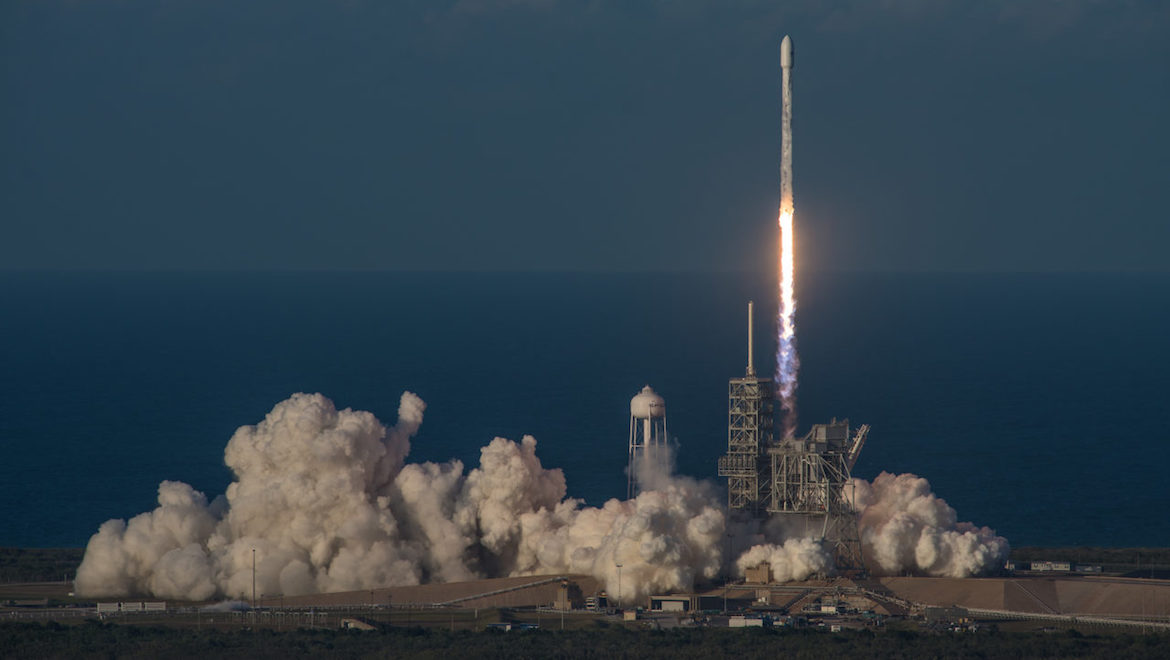
Meanwhile, Viasat finds itself behind the global coverage curve, with only regional satellites: its own over North America and the North Atlantic, its 50:50 venture with Eutelsat over Europe, and its Sky Muster partnership over Australia.
“We’ve partnered regionally, globally,” Don Buchman, Viasat’s commercial aviation vice president and general manager, told Australian Aviation. “We own half of KA-SAT here through a joint venture with Eutelsat, and that’s how we’re able to serve El Al, SAS, Finnair, Neos and La Compagnie in the near future, and Icelandair as soon as their (737 MAX) aircraft get ungrounded.”
Meanwhile, there is “Viasat-2 over the north Atlantic and in the US-Caribbean. Then we have some other partnerships that haven’t been announced yet. We’ve talked about Telebras in South America, in Brazil, that’s going through the process right now with quite a few sites on line. We’re serving Australia today with NBN’s Sky Muster 1 and 2. It’s been fantastic: the same technology that we’ve built here in Europe and the US, in our KA-SAT or Viasat-1,” Buchman says.
Three satellites make up the Viasat-3 constellation, which gets Viasat to where Inmarsat was before that company launched its fourth satellite in 2017. The Viasat-3 birds will launch starting in 2020, with the first over the Americas, the second over EMEA, and the third over Asia Pacific by 2022-23.
The focus for a “pure Viasat-3” network, Buchman says, is “really getting our three satellites launched and then brought into service.”
In the meantime, Viasat is clearly at a competitive disadvantage and has sought to fill the gap with an updated hybrid antenna that can communicate with either Ku-band or Ka-band satellites. The idea for this is that where Ka-band is available, it will use that, falling back to Ku-band where necessary.
Qantas was supposed to have adopted this technology for its Asia Pacific A330 fleet, but eventually decided not to, Buchman says. “They had evaluated it, because they do a lot of transcontinental and, say, Bali and Manila. They evaluated it and decided to put just the Ka-band-only kit on. That was the best value for them.”
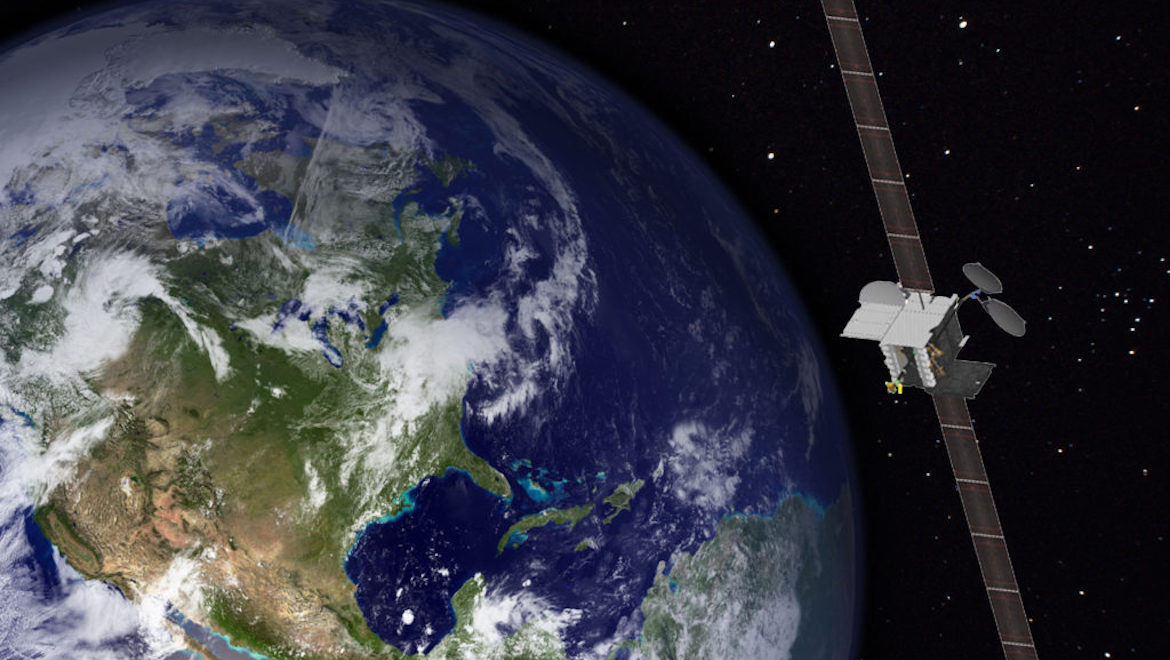
Asia Pacific has seen relatively slow adoption of connectivity — and speeds
There are numerous reasons behind the Asia Pacific being a relatively laggard region in terms of inflight connectivity rollout.
Unlike North America, it is not primarily one continental landmass with dominant coastal centres and largely a single regulatory system driving a lack of early air-to-ground proving technologies like that used by Gogo. Unlike Europe, the regulatory systems are not aligned with a single supranational regulator.
Uniquely, it has two economically and geographically large players — China and India — that were particularly late adopters from both an overflight permission and inflight provision perspective.
And, particularly in Australia, historic underinvestment in broadband has reduced demand for connectivity. Like other countries that failed to invest in ground connectivity infrastructure, people are simply more used to being disconnected or having slow, laggy Internet than elsewhere.
All this, however, is changing, says Inmarsat’s Asia Pacific boss Chris Rogerson. “There’s a lot going on in Asia Pacific. It was a really great year in 2018. We saw a lot of success. Obviously we have a very established customer base, the likes of Singapore Airlines, Philippine Airlines, Garuda Indonesia and AirAsia.
“If we look at new wins, we’ve found some fantastic new regional partners. Indonesia has been a fantastic new market for us with the Garuda group. We have the Garuda fleet, Citilink fleet, which are actively installing.
“The first installation is on a Citilink A320ceo, but they’re planning on a full-fleet installation across the whole 50 aircraft, up to 75 on Citilink with their new aircraft coming. With Garuda, it’s going to be across their 737 fleet, their A330s and their 777s, so both domestically and international.”
Inmarsat’s multi-reseller strategy means that the company itself is focusing on providing the infrastructure, leaving its resellers — the rough equivalents of inflight service providers — to create innovative business models for individual markets.
In Indonesia, for example, “we partner with a company called Mahata Aero Technology, which is a regional connectivity partner,” Rogerson explains. “They’re actually very new to the connectivity space. They’re very much looking at it from an ancillary revenue perspective. They partner with Inmarsat for the connectivity, they partner with Lufthansa Technik for the hardware and the installation, and the MRO is GMF within the Garuda group, and also Lufthansa Systems for the BoardConnect platform.”
From a passenger experience perspective, of course, free Wi-Fi is a bonus, even if it comes with some strings. But as installations of broadband connectivity — whether Ka-band, Ku-band or even the dedicated safety L-band services — reach critical mass at a growing number of airlines, the much-promised benefits to the flightdeck, airline operations and the environment can be realised.
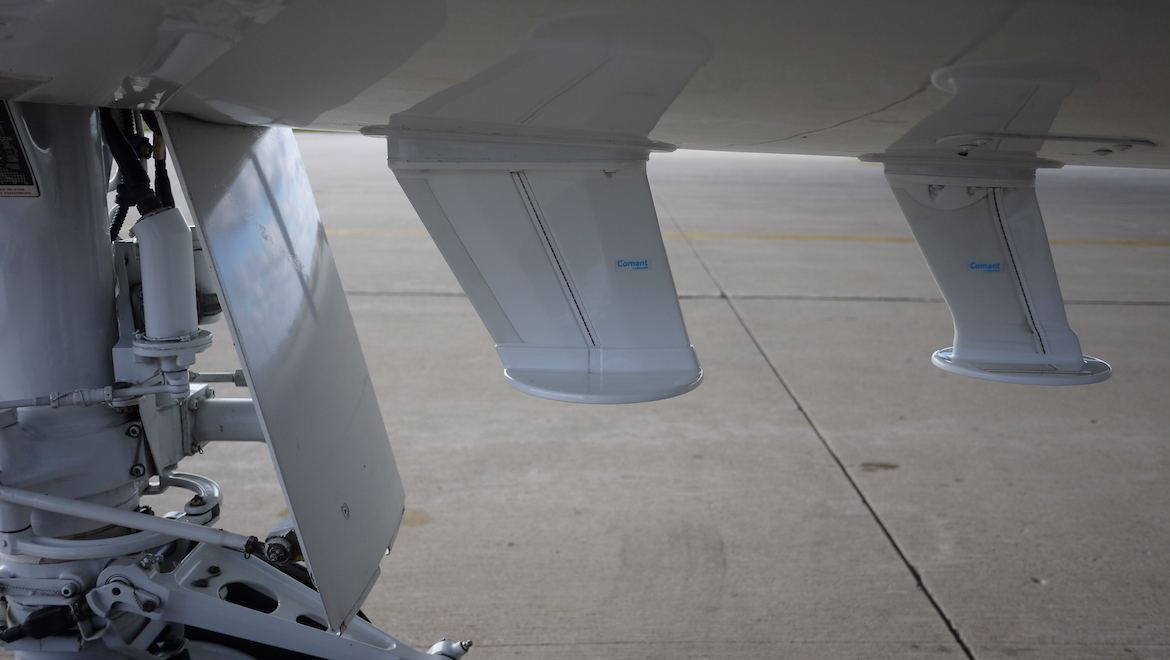

Flightdeck and operational benefits
“Up to 2015,” says Inmarsat’s Rogerson, “satcom cockpit services were limited to non-broadband services allowing for a limited bandwidth connection to the aircraft. This limited bandwidth enabled aircraft to exchange text messages with ground stations, but not much more.”
The next decade and onwards will, however, see an exponential rise in connectivity — and in what airlines can do with it.
Regulator confidence in the ability to use certain non-flight-critical applications via a secure section of the wider public Ku- or Ka-band broadband pipe, together with the arrival of L-band safety service that Inmarsat calls SwiftBroadband-Safety, opens up a world of possibilities.
Live electronic flight bag tablet computers can provide flight optimisation, better informed route planning, real-time graphical weather, charts and more, enabling both fuel savings and a reduction in emissions.
Airspace capacity can be increased through the use of higher frequency (often live) position reporting, as well as improved communications channels with air traffic control, whether that is voice over IP or ACARS over IP.
Safety and security will see key wins too: global life flight tracking is a major benefit, as is ongoing “black box in the cloud” transmission and increased reliability. Real-time cabin video can be uploaded to an operations centre, allowing both the scrutiny of aircraft on the ground to counter security and pilferage threats, as well as to assist in the management of disruptive passengers on board.
Predictive maintenance, too, using sensors connected to onboard hardware that can pre-empt failures, can analyse the urgency of failures that do occur, and request spare parts be available before landing.
Two-way telemedicine is also now a reality, allowing emergency medical staff and specialists on the ground to gain a real-time view of what’s going on in the aircraft.
All this improves asset utilisation. Parts can be pre-positioned, maintenance performed pre-emptively, medical diversions reduced, technical logs made more efficient, and crew scheduling improved.
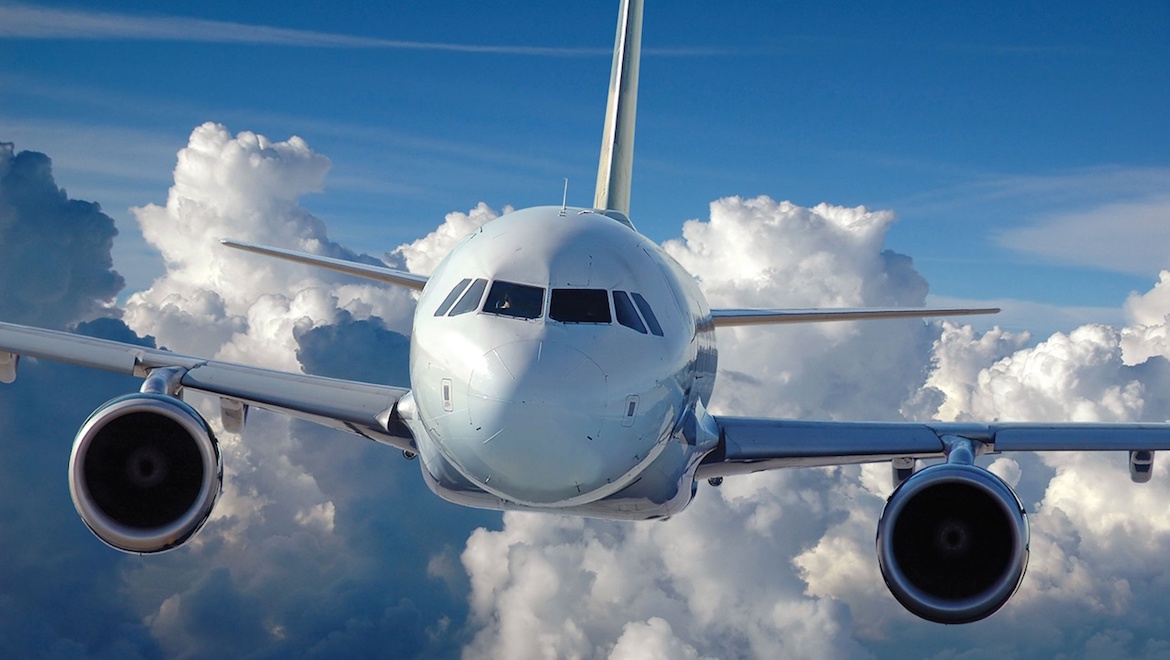
Inflight connectivity set to revolutionise air traffic management
One of the key gripes from airlines — including most recently at the annual general meeting of the International Air Transport Association in Seoul in June — is that the air traffic control and management in key parts of the world needs serious overhaul.
Inflight connectivity, says Inmarsat’s Chris Rogerson, is set to help here. “SwiftBroadband-safety will provide the platform for Iris, a ground-breaking project with the European Space Agency that uses satellite-based communication to enhance and modernise air traffic management over Europe.”
“The Iris programme supports the SESAR (Single European Sky Air Traffic Management Research) masterplan to alleviate airspace congestion, reduce flight times and delays, and enhance safety and security,” Rogerson says.
“The program will focus on using advanced satellite technology to improve aeronautical data link services, enabling flight plans to be updated continuously, even while aircraft are on route to their destination. This will lead to the significant optimisation of European airspace and airport capacity, in addition to overall reductions in flight times, fuel burn and carbon dioxide emissions.”
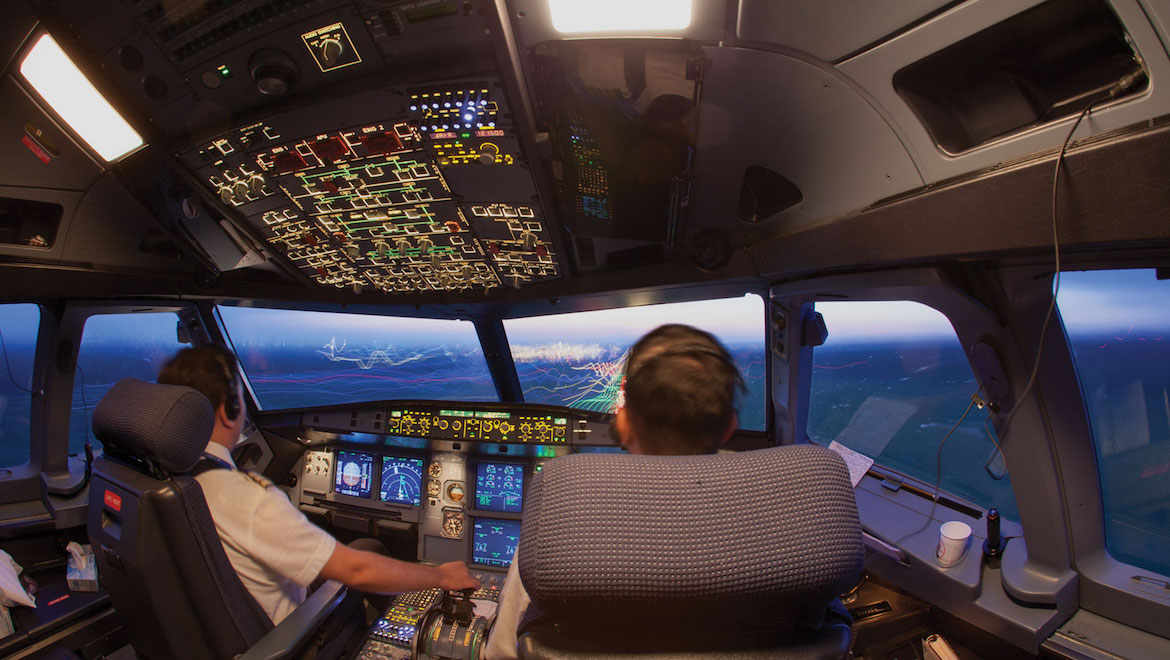
Getting more data on to and off the aircraft is key. “Iris and its satellite connectivity is also designed to enable initial ‘4D’ trajectories, pinpointing an aircraft in four dimensions: latitude, longitude, altitude and time, which is one of the major concepts defined in SESAR. This will enable precise tracking of flights and more efficient management of traffic through Trajectory-based Operations (TBO). TBO allows pilots and controllers to collaborate on flight trajectories and calculate the shortest available routes, cruise at optimum altitudes, and use continuous climb and descent paths, saving fuel and improving the environment,” Rogerson says.
None of these systems requires SwiftBroadband-Safety, however, but it is one way to include a secure, relatively simple to install and low-drag connectivity part of the proverbial puzzle. “SB-S will support the transition to a full 4D trajectory concept in a multi-link air traffic management system where satcom will be one of the primary data link technologies,” Rogerson says.
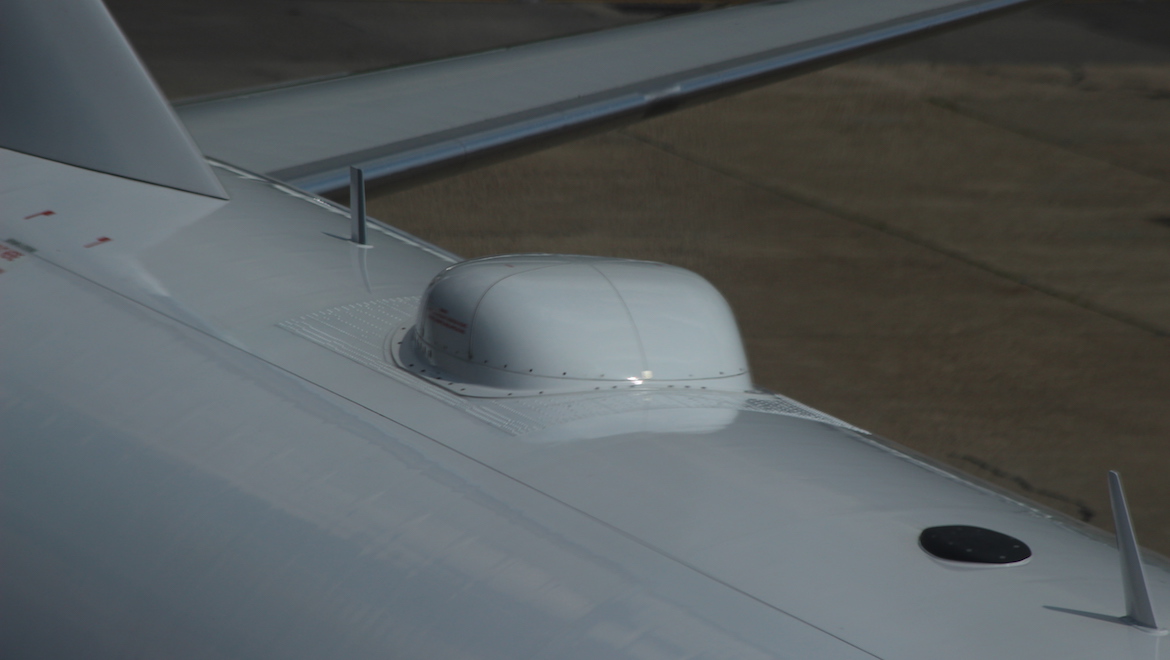
For passengers, free and fast Wi-Fi will change how they approach flying
When Air New Zealand announced its inflight connectivity — provided by Inmarsat — would be free from December 2018 through February 2019, the sound heard round the world was the tinkling of shattering glass as business models smashed to the floor. The airline then extended its free offer through March, and later proclaimed that it would be permanently free.
“For me, as a trend that we’re seeing — we see it happening on Singapore Airlines to a certain extent, with Philippine Airlines giving an element of free, Air New Zealand going completely free regardless of ticket type — going forward that’s something we’re going to certainly see more of,” says Rogerson. It’s a really great testimony for GX that the network is capable, on a 777, a widebody high-capacity aircraft, to offer a free-of-charge service.”
Crucially, however, free connectivity makes demand go wild, and it only makes sense if an airline and its provider has confidence in the supply. While the free Air New Zealand service has the benefit of Inmarsat’s Ka-band pipe and advanced internet traffic management, some non-Ka-band previous attempts at giving free connectivity — to premium class passengers, to frequent flyers or to the whole plane — have meant that the speed slowed down for everyone.

(Suhyeon Choi/Unsplash)
Rogerson says that Inmarsat’s capacity investments are the solution. “If you look at what we’re doing in terms of capacity, we’re making sure that we are delivering new space capacity to not just satisfy demand today but we’re very cognisant of what’s coming down the line in the next five-10 years.”
“We have conversations, especially with the Air New Zealands of this world, which is one of the more innovative airlines, about ‘what are you thinking that passengers are going to do’?” Rogerson says. “We will have a view, but the airlines have a much better view of what they think passengers are going to be doing. What’s the next experience in IFE? Do they want to be bound by what’s on the screen on an onboard server, or do they want to move towards not just Netflix, but the streaming content style?”
A long-promised goal from Panasonic Avionics, now Inmarsat’s Ka-band partner rather than competitor, has been to leverage both sides of the inflight entertainment and connectivity equation by responsively loading content, either as a single download to the aircraft in the sky or with predictive systems via ground communications when the aircraft is within range of 4G or Wi-Fi networks.
Essentially, if the system knows that Mrs X Traveller has inhaled six out of seven loaded episodes of a certain TV show on the first of her two flights this week, the idea is that it would download the rest of the season to her next flight during the turnaround. If Mrs Traveller is a frequent flyer, or in first class, the airline might even specify that the system download it immediately for her viewing pleasure.
The future of inflight connectivity is thinking up and implementing solutions like this, as well as reducing the size and weight of the radome and antenna ‘warts’ stuck on top of aircraft fuselages, resulting in less drag and fuel burn.
But it won’t be here until the next-next generation of aircraft, it seems. On balance, either the industry is unusually secretive or no inflight connectivity provider was working closely enough on details for integrated antennas on the proposed Boeing NMA/797 due for launch at the Paris Air Show in June. While empennage-based antennas already exist for the Boeing 737 family in its military and business jet applications, the technology needs a couple more generations of refinement before it’s ready for full commercial primetime.
For now, passengers can sit back, relax and enjoy being connected — while pilots and airlines work increasingly more connectedly to get them where they’re going.
This story first appeared in the July 2019 edition of Australian Aviation. To read more stories like this, subscribe here.





